Heading out the door? Read this article on the new Outside+ app available now on iOS devices for members! Download the app.
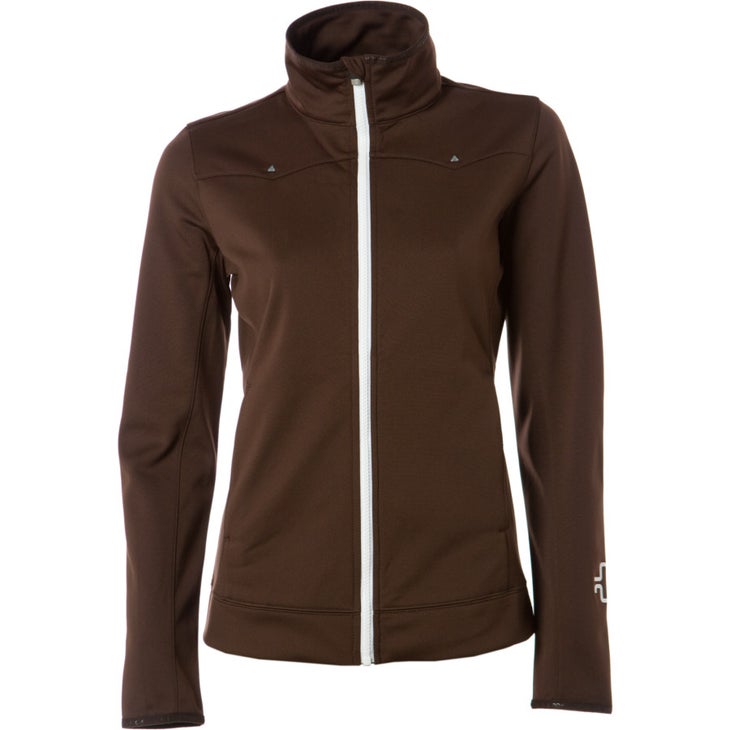
Powderhorn is a ski apparel company that originally launched in the 1970s in Jackson Hole. The brand disappeared for a few decades and then reemerged again a couple of years ago. Now the clothes are made in Switzerland, but they still have a distinctly Western feel to them. All winter, I’ve been wearing Powderhorn’s Palomino Jacket, a women’s full-zip softshell jacket. Its best asset is its versatility: It’s cozy and slim-fitting enough to wear as a midlayer under your hardshell on cold ski days, it’s wind-resistant enough to wear as an outer layer while shoveling your driveway, and it’s stylish enough to wear while sipping martinis in Aspen. [$175; Powderhornworld.com]
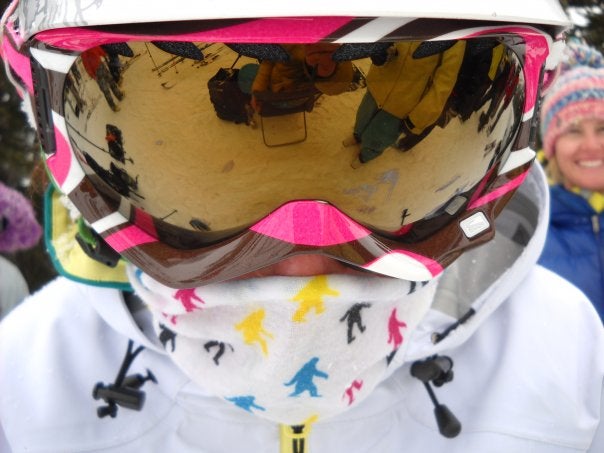
Outdoor Technology’s Yowie is very similar to a Buff, a tube-shaped, cooler version of the neck gaiter that, in addition to protecting your face from wind and sun, turns into a hat, a goggle case, a snot wipe, and more. The main difference between a Yowi and a Buff is the price: Compared to the Buff’s $20 price tag, a Yowi costs a mere $7.99. I’ve been wearing my Yowie everywhere from the resort to the backcountry lately. On a hike up, I’ll wear it has a headband to keep sweat off my face. When I get to the top of the peak and wind starts blasting my face, I’ll pull the Yowi down to protect my cheeks and neck. And then, at the end of the day, I’ll wrap my goggles in my Yowi to protect the lens from scratching and store them away in my pack. If you like the Buff but want something different, try a Yowie. One of them will cost you less than a movie theater ticket. —Megan Michelson
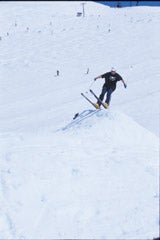
The bulk of the ski market doesn’t buy huge, stiff, long skis. But I do. These early-rise, flat-tailed, wide-bodied, square-tipped, super G–turning, straightline-tracking, mountain-destroying sticks may look scary, but the tip rocker makes them criminally easy to turn—especially for skiers like me, who weigh as much as both Olsen twins.
[rossignol.com; $849] —Jake Bogoch
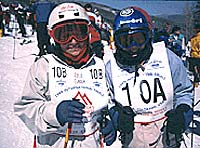
This jacket is made of waterproof-breathable Gore-Tex Softshell, a material that only gets softer with time. Like jeans. Its solid color is low-key, the hood fits over a helmet, the powder skirt is great for storm days, and the pit zips are enormous. The Velcro patches on the cuffs could be bigger and stickier but that���s a quibble for a techy jacket that doesn’t look it and gets more comfortable each time I wear it. [cloudveil.com; $495] —J.B.
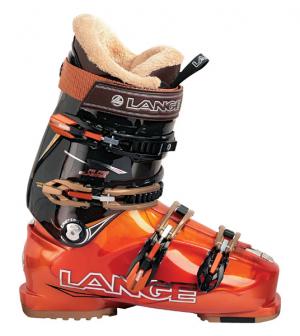
I loved the Langes I grew up in, but they hurt my shins. Last spring I stepped into a pair of Super Blasters. Wow, Langes have changed. The gel-padded tongue completely eliminates the Lange bang of old. But the coolest innovation is the third-buckle walk-mode switch. Flip it open for easy hiking, skinning, or base-village pub crawling. And the sole is also grippy for traction on the bootpack. [$580; langeski boots.com] —Ben Rifkin
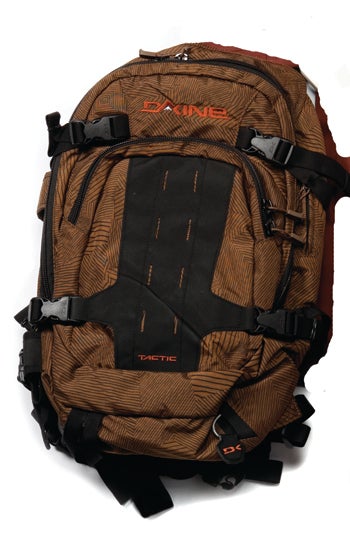
My Dakine Tactic pack has flown between Italy and America 14 times. It was puked on by a drunken Swede in Sölden, Austria, nearly blown up by a land mine masquerading as a refrigerator in Afghanistan, abducted on a train to Zermatt, and swept into a pine tree by an avalanche in Paganella, Italy. It rag-dolled over rocks in Cortina and was an integral part of an ill-conceived attempt to smuggle the Dead Sea’s legendary restorative muds to Vicenza. Mostly, though, it has carried my skis and gear up everything from the Highland Bowl to the Col du Midi. When I bought the pack as a freshman in college, I had no idea what climbing skins were, or that probes were for anything besides rectal exams. But when I figured out what “AT” meant, there was a space for skins next to extra layers. When I got smart about avalanche safety, I found that the front pouch’s straps were made to hold a shovel and probe. I learned the purpose of ice-ax loops and that my crampons fit in a space previously reserved for smuggling fifths of Cuervo between dorms. As much as I’d like a pack without a puke stain, there’s no point in replacing something that’s merely dirty, not broken. [$115; dakine.com] —Jake davis
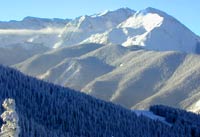
Know what sucks? Getting hurt in the backcountry and only having whiskey in your medical stores. This kit weighs less than two pounds and has enough gear to help you stop bleeding, splint broken bones, and self-medicate. Throw it in the bottom of your pack and don’t even think about it until your buddy’s femur is sticking out of his ski pants. [$60; adventuremedicalkits.com] —Heather hansman
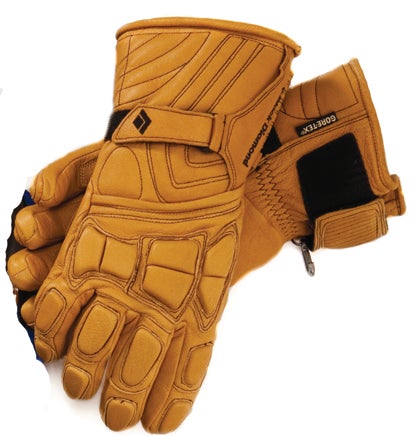
A glove needs to do only a few things, but it needs to do them well. It should offer protection from the elements, and provide some dexterity. The Mad Max glove excels in both departments. Its wool liner keeps you warm. The knuckle pads up the warmth and protect against run-ins with trees and ice. The supple yet durable goat-leather outer delivers lots of grip. And despite their complex design, they’re so dexterous you could build a model airplane in ’em. [$190; blackdiamondequipment.com] —Scott Gornall

You need a good headlamp for three reasons. (1) You could get lost in the backcountry at night. (2) You might have to shovel your car out of a snowbank in the dark. (3) During a big storm, your house might lose electricity. Petzl’s Tikka Plus2 has one super-bright white LED, one red LED, and five different lighting modes. In economy mode, burn time is 140 hours. Swap in lithium batteries for prolonged use in lower temperatures. [$40; petzl.com] —Megan Michelson
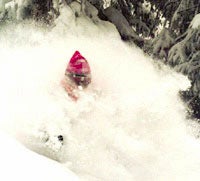
The best type of ski training is the kind you don’t know you’re doing. Like slacklining, which involves balancing on a tight, bouncy length of webbing (a slackline) stretched between two stationary objects (trees, rocks, truck bumpers). This one sets up in about two minutes, is fun at a backyard barbecue or campsite (especially after a few pops), and thoroughly works your balance system. [$80;
gibbonslacklines.com] —S.B.
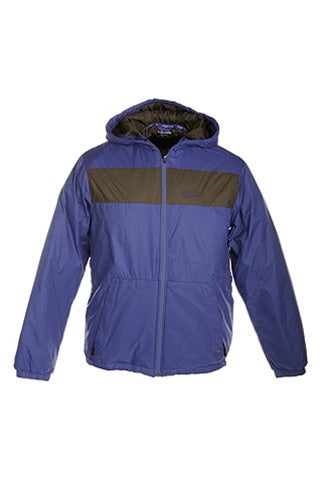
When it’s cold, I wear this jacket most of the time—skiing, shoveling, hitting the grocery store, driving. It’s warm (thanks to low-profile Thermolite insulation) and nearly weightless. The hood is big enough to fit over a helmet but cinches down if you just want to wear it over a hat. If I’m skiing in the freezing cold, I’ll wear a shell over the King. My only quibble: The arms are a mite short. But that says more about my simian proportions than about the jacket itself. [$160; flylowgear.com] —Sam bass
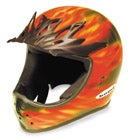
Scott’s frame colors and straps have been ballsy for years. But I buy goggles according to how well they repel fog, how they fit, and how well I can see through them. Scott used to trail its competitors in optical quality, but no longer. The spherical lenses are superb, the frames fit medium to larger faces and integrate well with most helmets, and the whole package costs less than other goggles of the same caliber. [from $85; scottusa.com] —J.B.
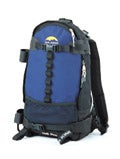
Bad things can happen in the backcountry. Your arm could get chewed off by a bear, or you could discover a secret tribe of angry polygamists. (Or an angry
polygamist could chew your arm off.) In any rough scenario, you need comfort food. For me, that food is sugar. Only these are energy chews, so they’re fake-healthy. They taste like candy, and that momentary surge of sugar is enough to momentarily distract you from the task at hand. [$14 per box; powerbar.com] —J.B
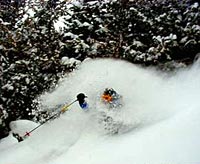
This isn’t the flask your grandpappy used to keep in his Bible. It’s got a wide mouth for easy sippin’ and easier cleaning. It’s tough and lightweight and fits easily in a pack or jacket pocket. And it’s made of odorless, tasteless stainless steel, so your sip of whiskey won’t taste like last week’s Goldschläger. [$20; stanley-pmi.com] —N.B.
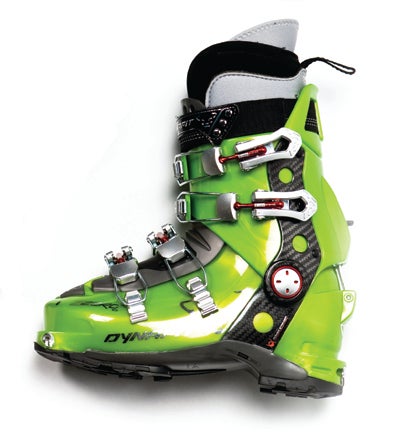
If you’re into ski touring but don’t want a heavy boot built only for the downhill, this lightweight four-buckle boot is for you. It’s just stiff enough to manage the ski down, but light enough for speedy climbing. Made with carbon fiber and light Pebax plastic, they weigh just seven pounds per pair—only four times as much as the average running shoe. [$749; dynafit.com] —M.M.
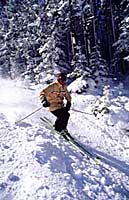
I hate helmets. Look at this one. Only a 12-year-old from Orange County would wear it in public. But this was the last one left in my size so now I look like a six-foot-three Smurf on vacation. But damn, it’s comfortable, and Smith makes it in non-terrible colors—such as dried-coffee-stain-on-white-T-shirt. Smith also claims it’s the lightest ski helmet on the market. Maybe it is. But the best feature is not noticing that you’re wearing it until you’re skiing fast, when the vents on the front whistle in the wind. It’s not an Andy Griffith Show whistle. It’s more of a scream-whistle, like the sound of Darth Vader’s TIE Fighter. When you hear this sound, you get pumped because it affirms that, yes, you are skiing fast. The only disappointment is the goggle clip, which incessantly pops out. Last season, on a deep day at Vals, a small hill in Switzerland, I ducked an alder branch and it grazed the back of my helmet and pulled the goggle clip out. My goggles slipped off into the snow and I stopped, sidestepped up, and looked for the clip. Thanks to its appalling color, I pinpointed it. A single drop of Krazy Glue solved the problem and it’s been smooth scream-whistling ever since. [$100; smithoptics.com] —J.B.
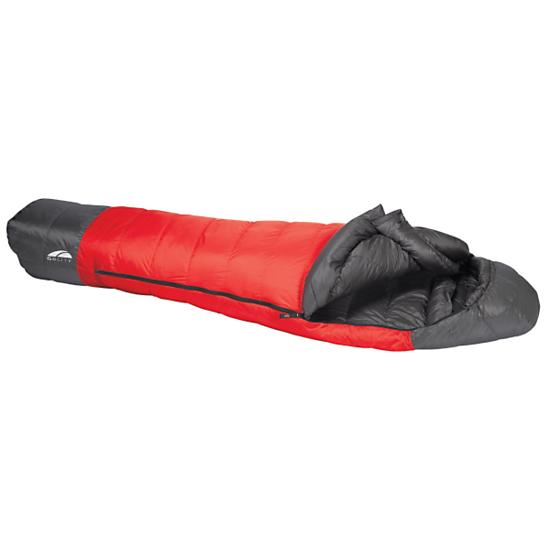
If I’m camping on a cold night and my bag isn’t warm enough, I’m livid. I wouldn’t care if my sleeping bag were made of lead, so long as it’s warm. Thankfully, the GoLite Venture bag is both light and warm. And it has a full-length zipper, so I can zip onto my girlfriend’s bag. [$400;
golite.com] —N.B.
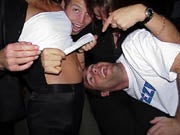
Coaches and patrollers always wear bibs. No wonder: There’s a massive chest pocket for storing a radio (or camera) and a sandwich, and no uncomfortable waistband, and you won’t get powder down your pants on deep days. But cool bibs are hard to find. Enter Trew Gear, a new small ski-apparel company started by a few twentysomethings. Their Trewth Bib has all the waterproofing and durability of patrollers’ pants, but in a less conservative color scheme. [$399; trewgear.com] —M.M.
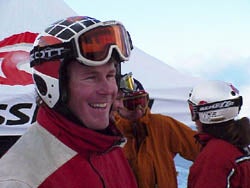
This do-it-all ski was the best all-mountain twin tip at Skiing’s 2010 test. And it truly epitomizes the values of the category with its blend of capabilities. Spin through the park, float powder, slice junk, or carve groomers. The Bridge does everything well. Pair it with an equally versatile binding, like Marker’s Jester Schizo (pictured), and you might not need to follow an oft-repeated piece of our advice: Buy more than one pair of skis. [$725 without binding; volkl.com] —S.B.
Adjust your mounting point simply by twisting a screwdriver. Put these bindings on a set of all-mountain twin tips and use a traditional rear mount to ski powder, trees, or groomers. For your afternoon park session, move the whole unit forward to a center-mount position. The binding’s wide footprint helps transfer the rider’s power to the ski. The Jester Schizo has a DIN range of six to 16, while the Griffon Schizo’s is four to 12. [$495, $395; markerusa.com] —S.B.

Last February at Snowbird, Utah, I tested dozens of skis over the course of four days. A lot of the most popular ones were obscenely fat, and bent inward and outward in weird places (I’m told this is called “rocker”). It took a full run to figure out how the hell to turn them. Don’t get me wrong. I appreciate innovation. But once the test was over, when I just wanted to go freeskiing without thinking about what was under my feet, I borrowed the Nordica Nemesis, the women’s version of the much-lauded Enforcer. It’s a strong women’s ski, which is often difficult to find, and it’s a simple ski with no “early rise” or futurist shape. At 98 millimeters underfoot, it’s wide enough to handle the blower pow and still versatile enough for fast cruisers. On snow, it reminds me of the speed-hungry super-G skis I used to race on. It’s a purebred, do-everything-superbly ride without any gimmicks. There’s something nice about that simplicity in an age of over-the-top designs. Kind of like ordering mac and cheese when there’s white-truffle lobster risotto on the menu—it may not be the fanciest thing, but you know it’ll be damn good. [$699; nordica.com] —M.M.
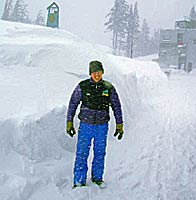
Just like the legendary bota bag, this three-liter boxed wine is for outdoor funhogs who want portable vino. The box’s tap system keeps wine fresh for more than a month after opening. Each box holds the equivalent of four bottles. Recycle the box at home and carry just the bladder on your next hut trip. [$19; botabox.com] —Mark lesh
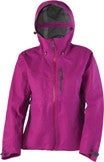
Full disclosure: I’m not a woman. And this is a women’s jacket. My girlfriend has this one and loves it. It fits the female form nicely. The Gore-Tex softshell is waterproof, somewhat breathable, and tough as chainmail. The fuzzy interior is soft and warm. At least that’s what I hear, because it’s a women’s jacket and I am not a woman. [$450; scottusa.com] —N.B.
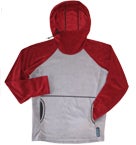
Hoodies are for gangstas. Ask any Tupac-bumping park rider. I like my thug appeal with a bit of functionality. The Micro Grid Hoody, which is made of moisture-wicking fleece and has a scubalike hood to keep ears warm, fits the bill. Melanzana. Maybe I’ll get that tattooed across my stomach. [$60; melanzana.com] —H.H.
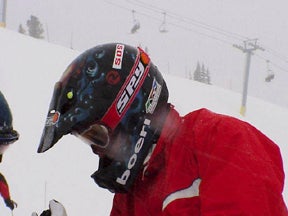
Cell phones in the mountains can be undependable. Two-way radios are your best bet. With 11 channels, a 35-mile talk range, hands-free communication, and access to seven NOAA weather channels, these lightweight radios are a no-brainer to have with you on the hill. [$80 per pair; hellomoto.com] —M.L.
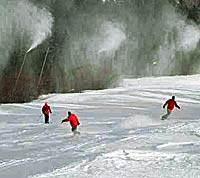
One-piece snowsuits keep the snow out, but you look like a goober. So be discreet and go one-piece underneath your jacket and pants with this merino-wool suit. The lightweight, next-to-skin baselayer hearkens back to the red union suits of yore but has some modern design tweaks, like odor-resistant merino wool, a hood, thumb loops, and a drawstring waist. And the old trapdoor in the seat has been replaced by a zipper that runs from just below the waist all the way around to the rear. [$150; io-bio.com] —S.G.
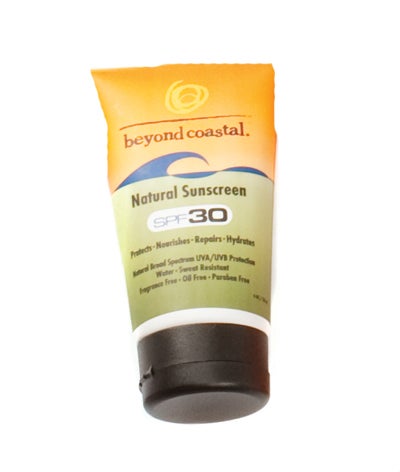
Given the amount of time I spend outside, I fully expect to be a leathery, wrinkled old lady. But I’m banking on this sunblock to keep me pretty for a while longer. It uses all-natural titanium dioxide to block rays, so you get protection without having to put anything creepy or unpronounceable on your face. [$16 for 4 oz.; beyondcoastal.com] —H.H.
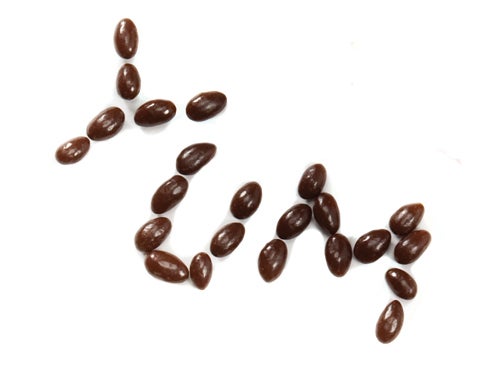
Behold the perfect on-slope snack. A couple of handfuls of almonds will net you nearly 600 calories, healthy fats, and some key vitamins. If they’re covered in chocolate you’ll also get sugars, thus more calories, and that tree-bark taste will be masked. They’re still edible when cold (unlike candy or energy bars) and adapt to any cramped pocket space. [$8 per pound at Whole Foods Market] —J.D.
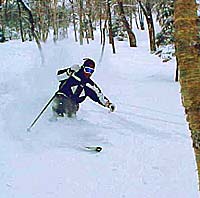
Shortly after moving to Colorado eight years ago, I went to a baseball game and was sorely disappointed. Where was the stadium mustard? Growing up in Cleveland, I thought every ballpark carried the unique spicy brown mustard that made grabbing a hot dog there something special. Sadly, this is not the case. Like flaming rivers and an economy based on LeBron James, stadium mustard is strictly a Cleveland thing. It’s been served at Cleveland sporting events for over 50 years and for good reason: Its vinegary tang will kick any tubed meat product to the next level. But good skiing? Definitely not a Cleveland thing. So now I enjoy my all-beef franks and ballpark mustard at springtime barbecues on Arapahoe Basin’s Beach. No hot dogs? No problem. Après tailgate sessions are the perfect time for a “stadium shot”: grab the bottle of Bertman’s and squeeze it directly into your mouth. It tastes like Cleveland but without the pollution and sadness. [$6.80 for a 16-ounce bottle; americanspice.com] —S.G.
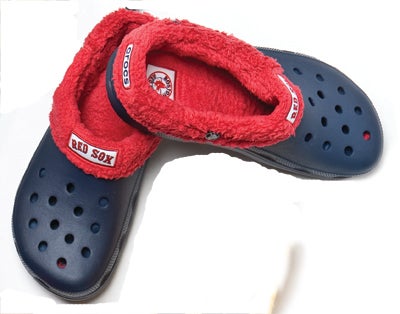
Skiing Magazine shares in your disgust with the man-clog trend that has swept through the left-leaning, mostly white, yoga-mat-carrying echelon of American society. But we don’t consider these man-clogs. They’re wicked comfy to slip into at your tailgate after a day in ski boots. And there’s nothing better than pissing off a Yankees fan deep in the mountains. Buy a size larger than your usual because that plush liner takes up some space. [$35; crocs.com] —S.B.
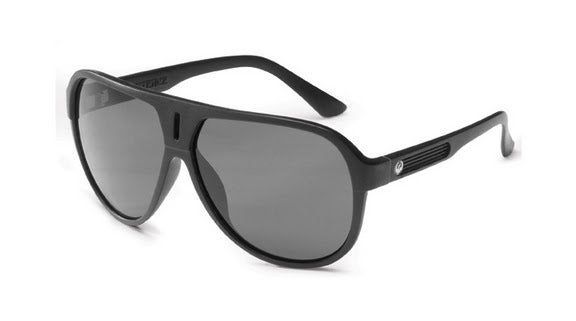
Pro surfer Rob Machado’s new signature sunglasses are lightweight and made of recycled material, and they fit perfectly. I use them for skiing and downhill mountain biking, not just because they fit under a full-face helmet but because the big lenses block wind and dust. [$100; dragonalliance
.com] —J.B.
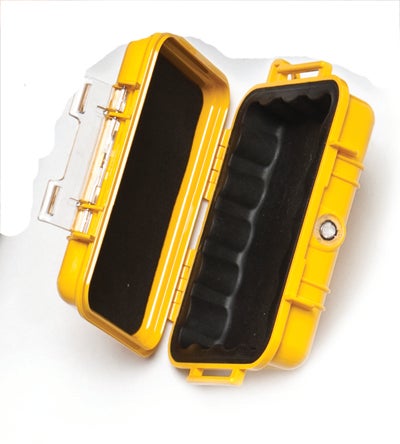
The real genius of a Pelican Case is that it keeps electronics safe from us as well as the elements. Just ask my camera: It survived an ill-advised cliff huck that shattered my ski. The 1020 is perfect for cameras, phones, or other small items that need protection. All Pelican cases are weather-, water-, and shockproof and come in sizes that accommodate anything from a memory card to a surface-to-air missile. [$21; pelican.com] —J.D.
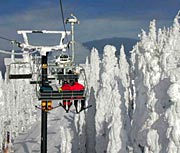
Anything with a z at the end of its name is automatically cooler (case in point: the 1991 John Singleton movie, Boyz in the Hood). That includes Sick Stickz’s Ant Eaters—high-quality aluminum poles made in Austria, then wrapped with funky graphics in Denver by a couple of college kids. They
started the brand three years ago on the premise that the ski-pole industry lacked creative design. Which it did. [$70; sickstickz.com] —M.M.
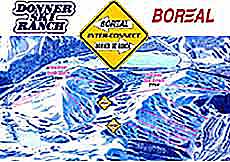
$210; www.pocski.com
Employing POC’s race-tested technology, the Synapsis XP absorbs impact and cushions your noggin. A stylish visor keeps snow and sun off your face and sleek vents keep you cool.
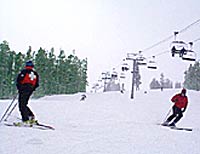
135/108/124; 191 cm only; $999; movementskis.com
The first generation had splotchy orange top sheets. That can’t compete with other ski graphics, like skulls vomiting blood. Then I noticed the inside of the thick-as-a-burger sidewall. Written on it was “Fight the power. Ride the powder.” I got the part about powder, but whose power am I to fight? I attributed the sidewall missive to cross-cultural dissonance from Movement’s native Switzerland and clicked into the demos. My first run was during a spring dump in Whistler. I opened it up on a steep bowl and skied as fast as I could. I bent them, looked down, and saw them not floating so much as steamrolling, the tip looking back at me above the snow. Then I sank deep into a super-G turn and stood on the downhill ski. Really stood on it. Tried to break it. But if skis could make a “That’s all you got, son?” smirk, these would have. That was it. I needed a pair. Skis obtained, I screwed on some Barons (see page 82) and took them to the Chilcotin, twice to the Andes, and up a fourteener or two. These metal-free, poplar-and-okume-cored beasts slashed powder, smoothed crud, shattered surface crust, and railed hardpack when there was nothing else to do. Fight the power? No. Embrace it.
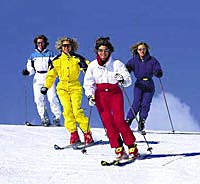
$5 at your local grocery or $20 for 100 precooked slices at omahasteaks.com
My mom tried to be a vegetarian once, back in the early ’90s. She would have made it, too, if it hadn’t been for bacon. Something about the smell, the sizzles and pops, and that salty, oily awesomeness that melts on the tongue made her cave. I’ve met committed vegetarians who speak longingly of bacon, as if remembering an old friend who passed away. My former boss used to call bacon “manfruit,” probably because men tend to eat it as if it commands a large segment of the food pyramid. But I looked up “manfruit” on UrbanDictionary.com, and what I found made me never want to use that term to describe my beloved fried pig strips. A belief I do share with my old boss, however, is that there’s no better breakfast before a long day of skiing than a few strips of bacon and a bowl of oatmeal. Cooked oats provide carbs for sustained energy, and bacon keeps you feeling full. I prefer uncured bacon, because I’m afraid of sodium nitrite, but do as you wish. And if you’re packing for a long tour, nothing saves stove fuel and fortifies those morning quesadillas like precooked bacon. —Sam Bass, Senior Editor, Skiing Magazine
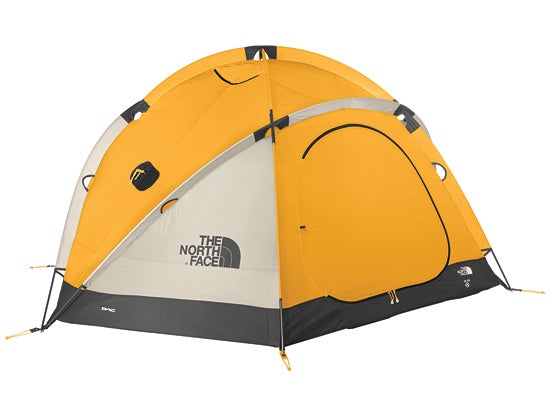
$549; thenorthface.com
It was born in 1986 and hasn’t changed much. That’s a good thing. It uses four equal-size poles to create a solid structure of evenly tensioned ribs—based on the principles of Buckminster Fuller’s Bucky Ball. Translation? Winter can bring it and you’ll sleep like the guys who founded Google.—Jake Bogoch, Editor, Skiing Magazine
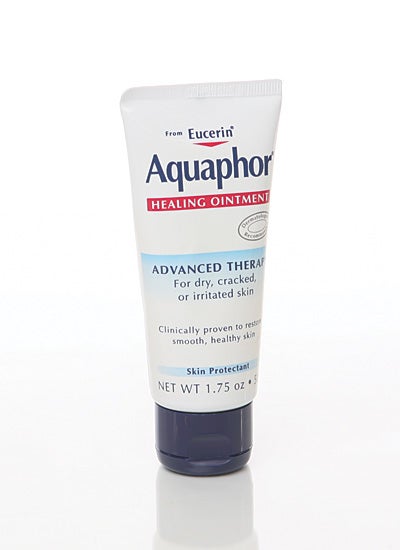
$6; eucerinus.com
This tasteless, scentless, go-anywhere goo will protect your lips from sunburn and wind chap. It’ll also rehydrate your fried smackers. Or slather it on your boot-ravaged feet before bed, cover them with cotton socks, and wake up with silky-smooth dogs. —Sally Francklyn, Contributor, Skiing Magazine
Check out more gear picks from Skiing Magazine.
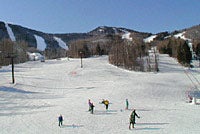
$199 with two lenses; giro.com
When light turns flat, it helps to have a lightly tinted lens, but of course that would entail switching your lenses—which can be frustrating. With the Manifest’s Pop-Top technology, you can switch the spherical lenses while riding the lift and wearing your gloves. —Scott Gornall, Associate Editor, Skiing Magazine
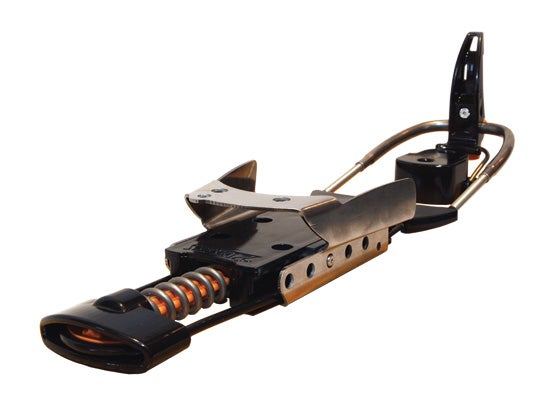
$225; twentytwodesigns.com
Telemark bindings have come a long way since the days of three-pin cable bindings. Exhibit A: the Hammerhead, weighing just over three pounds per pair, and with five settings from stiff to squirrelly. We’ll admit, even in its least-resistant setting, it’s not ideal for touring, but if you spend most of your time charging downhill, you need this binding. —Megan Michelson, Associate Editor, Skiing Magazine
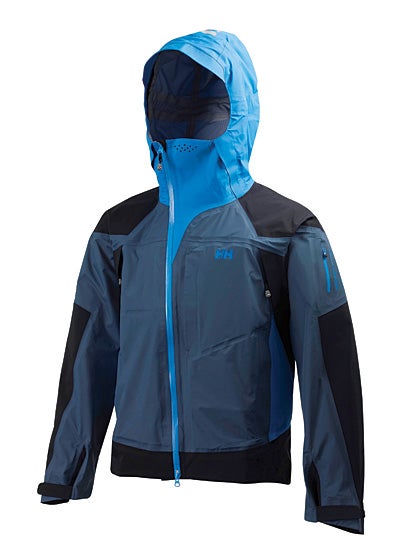
$350; hellyhansen.com
I’m a whore. I’m not brand loyal. So, when gear works perfectly, I see no need to exchange it for something new just because of its newness. What is it, a Larry King wife? No. It’s a jacket. I’ve had this one for four years. It could’ve finished med school by now but it’s been slumming with me instead. And it has no business being intact. Sitting around campfires should have burned holes in it, hitting a tree at Snowbird should’ve torn it, a fellow hosteller should’ve stolen it. But I’ve put nearly 500 days in this thing—a ski traverse in Spitsbergen, a couple hundred ski-touring days in Colorado and British Columbia, and neck-deep weekends in Utah—and it’s going nowhere. It’s been washed and dried but the inside of the collar won’t come clean: It’s black and crusted like the inside of a half-full Nalgene bottle lost for a month and found behind the water heater. And it vaguely smells like Jet B heli fuel after I spilled some on it. But nothing fundamental has changed. It’s light, the pit zips are huge, the hood easily adjusts to any melon, and it’s just baggy enough to mitigate the nerdiness of the tech. It’s the only jacket I’ve worn in the mountains for nearly half a decade. Though mine is a solid orange, the new colors are slightly Euro-fruity. But it’s a small price for perfection. —Jake Bogoch, Editor, Skiing Magazine
Check out more gear picks from Skiing Magazine.

$295; cloudveil.com
I was slogging along a skin track behind a friend in Colorado’s Indian Peaks. My full-zip hardshell pants were hanging wide open at the thighs to let in a much needed crosswind. My buddy breezed along in a pair of Schoeller-fabric pants from Cloudveil, not even sweating. I bought a pair of the same pants the following week. We toured again the next weekend, and I discovered what wool-slacked mailmen making winter deliveries have known for decades: Unless it’s raining or below zero, stretchy, breathable, weather-shedding softshell pants are all you need. —Sam Bass, Senior Editor, Skiing Magazine

$8; nikwax.com
After a couple years, even Gore-Tex gloves start to soak through. Slather them with NikWax, a nontoxic potion that smells like the wax the shoe shiners at the airport use, and you’ll never have to swap gloves at lunchtime again. —Sally Francklyn, Contributor, Skiing Magazine
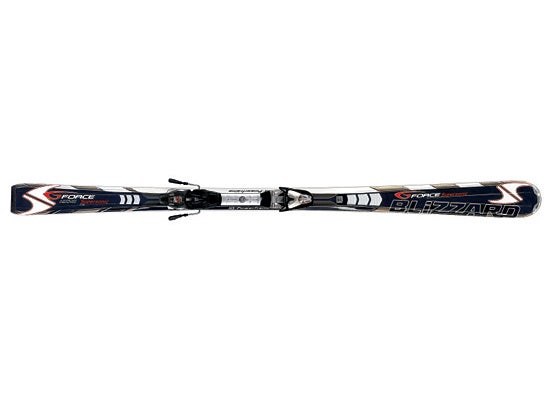
123/72/105; $1,300 (with binding); blizzardsportusa.com
I’m not a huge dude: six feet, 160 pounds. I’m an ex-racer, but I’m not an animal. On hard frontside days I like a ski that hooks easily into turns, stays on a rail, and flows from turn to turn without much muscle. This Blizzard nails it. —Mark Lesh, Photo Editor/Assoc. Art Director, Skiing Magazine
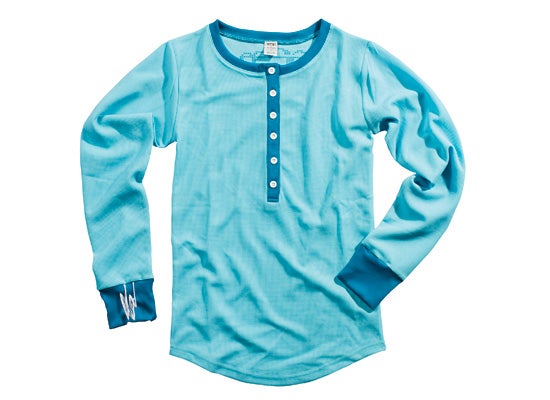
$50; eesa.com
Picture this: a moisture-wicking, anti-stink baselayer that doesn’t actually look like a baselayer. It keeps you dry, it won’t offend nearby noses, and you can wear it without looking like you’re climbing Everest. In fact, Eesa’s entire line is designed to go from lift line to nightlife. Why hasn’t anyone thought of this before? —Katie Matteson, Contributor, Skiing Magazine
Check out more gear picks from Skiing Magazine.
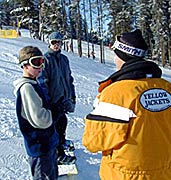
$154; hankooktireusa.com
You don’t actually need studded winter tires. Recent research shows that many studless tires are outperforming studded in wet, dry, and icy road tests. The stud-free Icebears come in a range of sizes to fit most cars. They can handle speeds as fast as 149 miles per hour, in case you’re late for first chair. —Niall Bouzon, Assistant Photo Editor, Skiing Magazine

$80; dragonalliance.com
My eyes glaze over when people start dropping fancy eyewear terminology, so I won’t. Just know that these damn-good, basic shades come with plenty of coverage, a polarized option, and dimensions for the average face. Dragon’s catalog conveniently specifies what face widths its glasses best suit; these are mediums. —Sam Bass, Senior Editor, Skiing Magazine
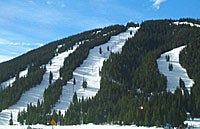
$685; scarpa.com
After two and a half seasons, my Scarpa T-1 telemark boots were down to one buckle on the left boot. The right boot’s bellow had cracked about an inch up from the sole. The liners were a patchwork of duct tape. But they fit me like slippers. On the hour drive to the mountain, they sat, jumbled, buckles undone, in the passenger seat. It was time to retire them. The thought of losing them almost made me sniffle. Then the T-Races—powerful, and rocker- and walk-mode-free—entered my life. I found new love. Last winter, my T-Races and I toured Vermont’s Green Mountains and traveled west to ski in Utah. Then we spent three months skinning, heli-skiing, and sled-skiing in Alaska’s Chugach range. Their built-in Booster straps eliminated shin bang, their stiff cuffs drove my skis into each turn, and their four buckles grasped my foot with affection. Not once did I think about my T-1s, which are now gathering dust in a murky closet. —Ryland Mauck-Duff, Contributor, Skiing Magazine
Check out more gear picks from Skiing Magazine.
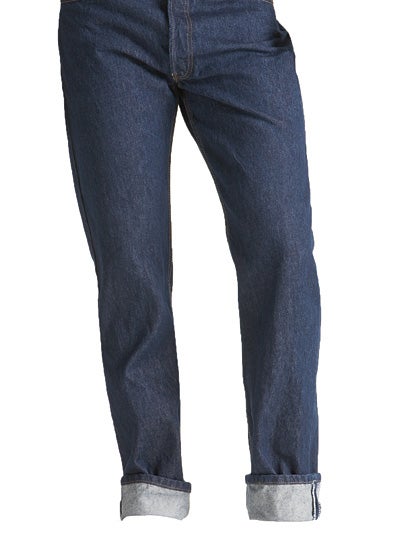
$46; us.levi.com
In junior high and high school, the straight-leg, tight-ass look was in, so my bros and I all rocked 501s. Then the hip-hop and rave cultures stamped their oversize mark on everything, and we hid our 501s in the bottom drawer. As the baggy look faded, I found myself embroiled in a denim crisis: Was I a boot-cut man (a genre that mixed tight and baggy), a loose-fit holdout, or was I ready to pour myself back into 501s? (For the record, I’ve never even considered relaxed fit.) To be honest, I’d contemplated a 501 homecoming for a while, but it wasn’t until revealing my jean stress to a coworker that I committed. “Try ’em again,” he said, so I went to Macy’s and bought a pair. They felt good, familiar. And in the privacy of the dressing room I admitted to myself that I used to buy them too small precisely for that tight fit. So I bought ’em a bit bigger. Thanks for taking me back, Levi Strauss. —Sam Bass, Senior Editor, Skiing Magazine
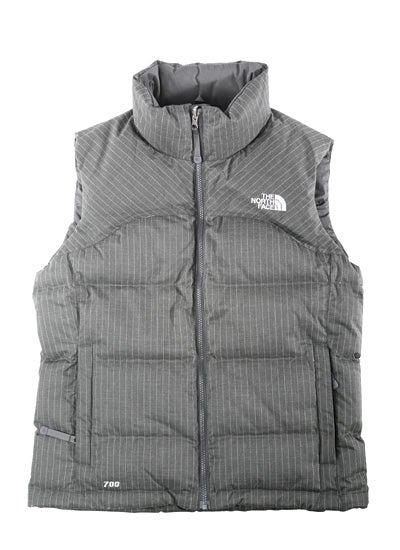
$125; thenorthface.com
I received this vest for Christmas four years ago, and it’s still my favorite thing to wear when the temps drop. It packs into its own pouch and has a fleece-lined chin and pockets. Wear it over a hoody or under your hardshell. —Sally Francklyn, Contributor, Skiing Magazine
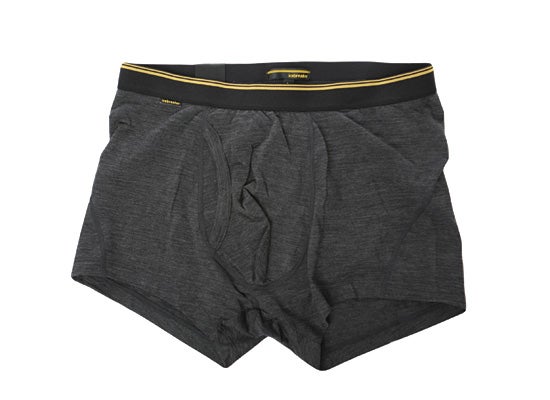
$40; icebreaker.com
Cotton boxers do one thing exceptionally well: collect moisture like a godforsaken sponge. Enter Icebreaker’s Beast Boxer Briefs, made from 100 percent merino wool. The Beast has gotten me through cold sweats, long car rides, and backcountry hikes, with the insulating breathability wool is known for—minus the scratchiness it’s also known for. Icebreaker has 30 wool growers on New Zealand’s South Island, and the wool they harvest is blended, spun, knit, dyed, finished, cut, and assembled with great respect for those cloven-hoofed beasts. —Charles Bethea, Contributor, Skiing Magazine
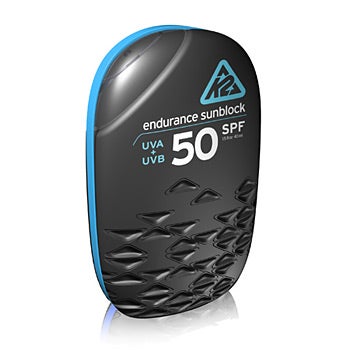
Protection Factor: Available in SPF 30 or 50. Unique polymer technology allows the lotion to bond securely to your skin to create long, sweatproof wearability while still allowing your skin to breathe.
Friendly Factor: The 4-oz. bottle with secure snap-down lid is designed for easy, mess-free use when you’re out playing in the elements.
Price: $13
Info: K2suncare.com
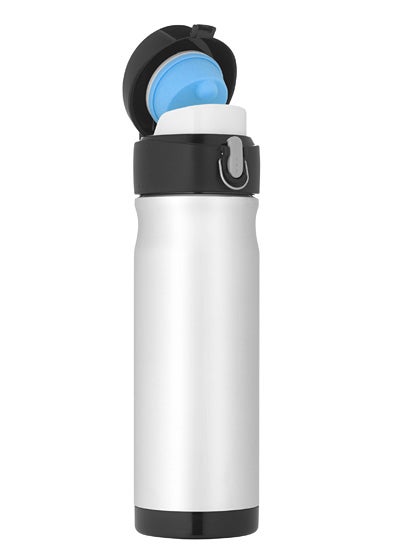
$30; thermos.com
I’ve been jealous of my kids’ sippy cups for a while now. They don’t break or spill when they’re dropped, and they dispense only the desired amount of liquid. Then my wife bought me my own, only mine keeps drinks hot for eight hours, fits in my car’s cup holder and my ski pack, and has a secure push-button flip-top. —Sam Bass, Senior Editor, Skiing Magazine
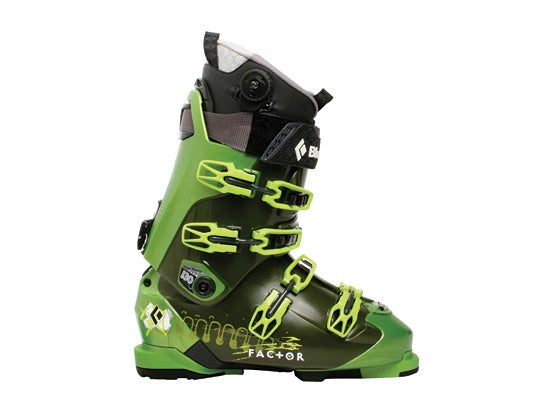
$729; bdel.com
I spend most of my time off-piste and in the sidecountry, but I need high-performance boots that won’t cave under pressure. The Factors can drive a beefy ski, but they remain comfortable and have a no-wiggle walk/ski switch. And I can spend all day skinning and boot-packing without getting wicked shin bang. —Mark Lesh, Photo Editor/Assoc. Art Director, Skiing Magazine
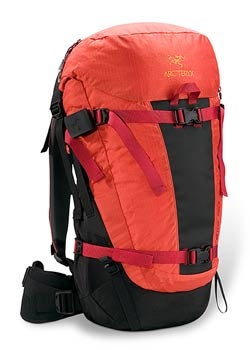
This fast access RollTop pack is large enough for gear intensive day tours. It’s V-Frame suspension is integral with the frame sheet for additional support. Tool specific pockets keep shovels and probes handy, and the 3D-thermoformed hip belt padding is removable, leaving a streamlined webbing belt.
$199; For more info, go to www.arcteryx.com.
PHOTO: ARC’TERYX

$150; si5.com
A great ski condo has three things: a fridge for beer, a hot tub, and music. For tunes, pack the i-F2 into your ski bag and voilà, you’re covered. Compatible with every version of iPod, the unit comes with a digital amplifier, a protective case, and a remote control. —Megan Michelson, Associate Editor, Skiing Magazine
Check out more gear picks from Skiing Magazine.
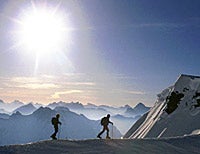
yarn, $5; hook, $2.45; learntocrochet.lionbrand.com
My grandmother once said the generic grocery-store ice cream accompanying my mother’s made-from-scratch pecan pie was tastier than the pie itself. My mom was furious. Homemade is always better than store-bought. So find some yarn, stitch your own hat, and stop wearing that overpriced beanie you bought from Gart Sports. —Sally Francklyn, Contributor, Skiing Magazine
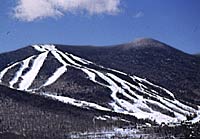
$300; garmin.com
The ease of the iPod-like touch-bevel makes the GPS-enabled Forerunner 405 a snap—or rather, a scroll—to use. It responds to your touch, even if you’re wearing gloves. Off the hill, use it to train. Set up a run with a virtual partner, then download and analyze distance, speed and heart rate data.
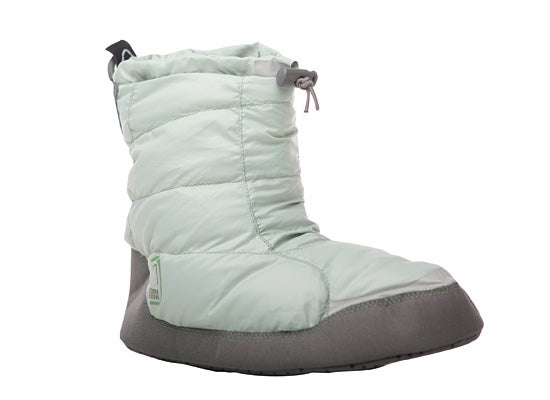
$50; sierradesigns.com
Francie’s Cabin, near Breckenridge, has a sauna, making it one of the most desired backcountry chalets in Colorado’s 10th Mountain Division hut system. The only downside: The sauna is out the back door and around the corner, which means you’ve got to run through ice and slush to get your sweat on. My first time at the hut, I did the sauna prance barefoot. I learned my lesson. My second time there, I packed these sticky-soled, indoor and outdoor slipper-boot hybrids. I sprinted to the sauna wearing a beanie, bikini, and booties. My toes didn’t suffer the usual burn, thanks to these 650-fill down sleeping bags for my feet, which come with thick soles, reinforced ankles, and a cordlock cinch system on the cuff. And they compress down to nothing. I won’t camp or hut-trip without them. —Sally Francklyn, Contributor, Skiing Magazine
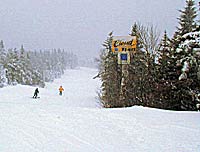
$50; nandahome.com
I once hit the snooze button for an hour straight, sleeping in five-minute bursts, unable to drag myself out of bed. Thank God it wasn’t a powder day. For repeat-snooze offenders like me, there’s Clocky. You get one snooze, and then this wheeled alarm clock rolls off your nightstand, makes loud R2-D2 noises, and gets evasive. When you do catch it, resist the urge to kick the little bastard across the room. —Scott Gornall, Associate Editor, Skiing Magazine
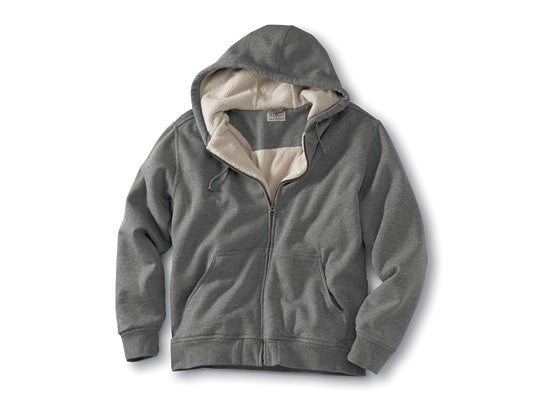
$50; llbean.com
One winter, I worked for a building contractor in Maine named Barry White. (Not that Barry White.) We were working on a barn during a brutal January cold snap that never saw temps above minus 10 for two weeks. Simply dressing for the job was a Herculean task, and since I didn’t want to trash my ski clothes I got creative with my layering: polypro long johns, then a couple of fleece jackets, then a cotton hoody, then a thick wool jacket. The hood was key. I wore a hat, but the hood kept my neck warm and sawdust-free. Five years later, I got a Katahdin Iron Works Sweatshirt for my birthday. I immediately wished I’d had it while building that barn. It looks like your standard Rocky Balboa cotton hoody, but the hood and body are lined with cozy berber fleece. The arms have a slick polyester lining that won’t bind with your underlayers, and the hand pockets hide security pouches for valuables. This’ll be perfect to slide into when I’m de-booting at my tailgate this winter. —Sam Bass, Senior Editor, Skiing Magazine
Check out more gear picks from Skiing Magazine.

$9 for 17 oz.; spatenusa.com
I love a beer as much as the next guy, but my Swiss-German heritage often steers me to the old school. Spaten has been brewing this classic doppelbock since 1894. At 7.2 percent, this full-bodied brew never disappoints. Never. —Mark Lesh, Photo Editor/Assoc. Art Director, Skiing Magazine
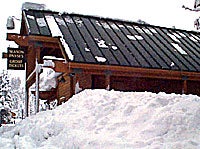
$33 for two six-ounce bags; alaskasmokehouse.com
I used to hate the oily, fishy taste of salmon. Then I spent three months in Alaska. Now I won’t go on a ski tour without salmon jerky. Hand filleted and dehydrated, it’s delicious on a cracker and topped with cheese or chewed straight from the package. —Ryland Mauck-Duff, Contributor, Skiing Magazine
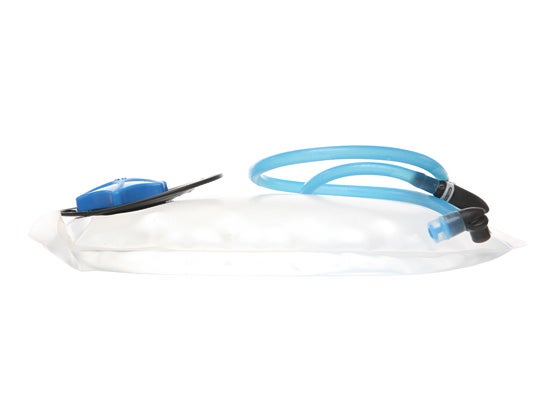
$30; dakine.com
This tasteless, odorless, polyethylene bladder ensures that your Willamette Valley pinot doesn’t taste like your Tanqueray and OJ. Its wide mouth and removable hose make refilling after three liters of cocktails much easier. It also works well for water. —Niall Bouzon, Assistant Photo Editor, Skiing Magazine
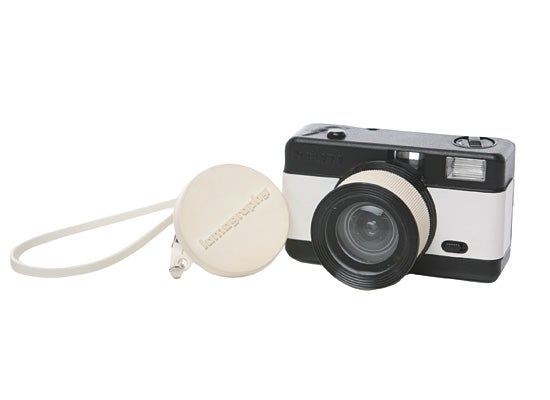
$50; lomography.com
Want to take artsy shots like the pros without 60 pounds of gear on the hill or hours of Photoshop work? This lo-fi pocket-size 35-millimeter camera has a built-in 170-degree fisheye lens that distorts everything in the frame into a circular image. It renders your subject, foreground, and background into total focus with amazing color. —Mark Lesh, Photo Editor/Assoc. Art Director, Skiing Magazine
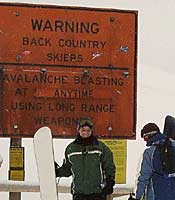
$435; markerusa.com
You know the story: The Dukes go to DIN 16, ski like downhill bindings, and tour. Changed the world as we know it. Good for them. But the new Barons use the same wide footprint, go up to DIN 12, and save you five ounces for the way up. —Jake Bogoch, Editor, Skiing Magazine
Check out more gear picks from Skiing Magazine.
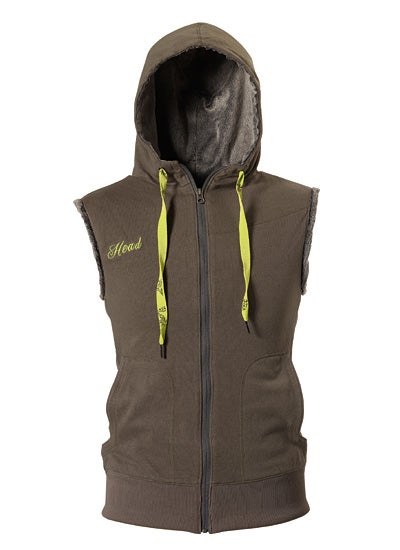
$129; head.com
The removable polyethylene padding built into the vest serves as a back shield—which is nice whether you’re entering a big-mountain comp or just want to protect your spine on the slopes. The stylish vest looks fine at the bar, too. —Katie Matteson, Contributor, Skiing Magazine
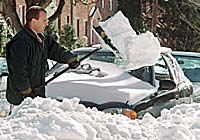
$800; thuleracks.com
In case you haven’t heard, ski racks have gone the way of Rick Astley. Sure, they make it easier to get into garages, but I’ll take the time to find an outdoor parking spot and keep my skis free of gravel and road salt. The new Boxter opens and closes on either side with one hand and can be mounted or removed in minutes. —Sam Bass, Senior Editor, Skiing Magazine
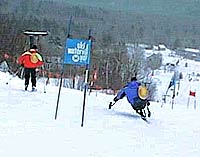
$150; hestrausa.com
It was mid-February at New Mexico’s Taos Ski Valley when tragedy struck. After a 45-minute boot-pack, I scoped my line from the top of 12,481-foot Kachina Peak. The wind whipped ferociously off the ridge, stinging my face and twisting my hair into a knot. I wanted to take a picture—the 360-degree view of northern New Mexico was almost lunar in its austere beauty. So I removed my right-hand glove to fiddle with my camera. Within a nanosecond, the wind grabbed my mitt and ran like a mugger in Oakland. I watched, dismayed, as the glove flew off the peak’s back side and descended into the permanently closed Wheeler Wilderness Area. Sure, I looked for it, sideslipping down and then hiking up in search of a tiny leather needle in that icy haystack. No luck. My favorite cowhide leather glove, with its stretchy neoprene cuff and padded fingers, was gone forever. I called Hestra’s customer service line soon after and told my sob story, recounting the details as if I’d lost a close friend on a dangerous expedition. Days later, there was a brand-new right-hand glove in my mailbox. Since then, I haven’t let it out of my sight. —Megan Michelson, Associate Editor, Skiing Magazine
Check out more gear picks from Skiing Magazine.
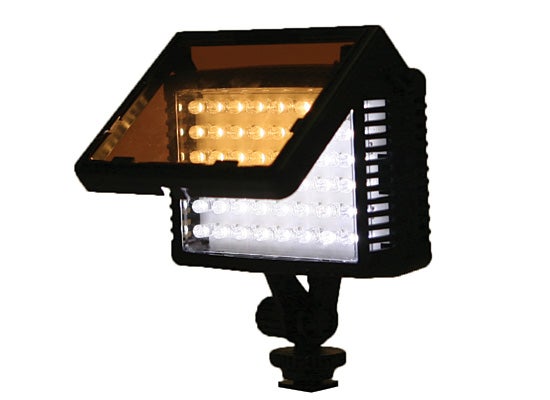
$300; litepanels.com
This four-by-three-inch light box can fill shadows, warm faces, and brighten flat light. Its variable intensity and optional filters make it perfect for shooting park-and-pipe action at dusk. Our recommendation: Set your warming gel and add a little contrast. —Niall Bouzon, Assistant Photo Editor, Skiing Magazine
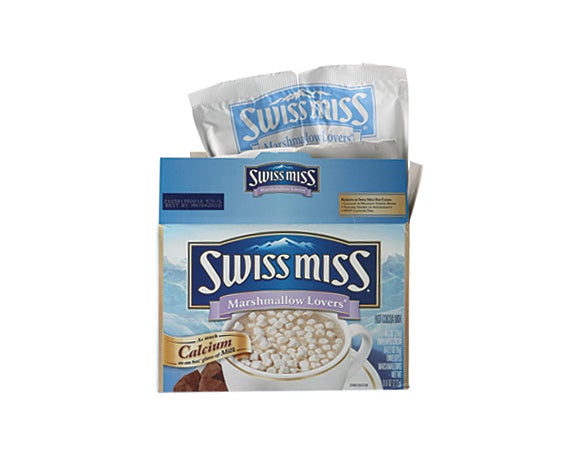
$9; your local grocery
Go ahead and make fun of me. Everyone else does. Because sometimes, at the end of a cold ski day when all my friends are ordering beers at the bar, I’ll ask the bartender for a cup of scalding water and a shot of Baileys. Then I’ll slyly dump a brought-from-home packet of Swiss Miss with those tiny Lucky Charms–size marshmallows into the cup, add the shot, and stir. —Megan Michelson, Associate Editor, Skiing Magazine
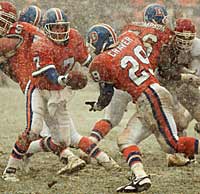
$75; nike.com
Packing winter boots can rob you of valuable space. And unless you’re post-holing for stealth cow-tipping in Wyoming, you shouldn’t need anything but leather sneaks to stay dry. Like these. The densely padded midsoles mean these shoes can walk, support, and, if cornered at a bar mitzvah, dance the hora. And they’re brown, so they’re pseudo-dressy. Not crampon-compatible. —Jake Bogoch, Editor, Skiing Magazine

$500; usa.canon.com
With 12-megapixel stills and high-res video, this little black box covers a lot of ground. Its lens has a film-equivalent focal length of 35–210 millimeters for snapping point-of-view shots or pulled-back landscapes. Plus, it’s small enough to fit in your pocket. —Niall Bouzon, Assistant Photo Editor, Skiing Magazine
Check out more gear picks from Skiing Magazine.
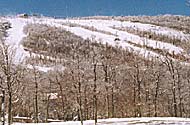
$85; xtratufboots.com
It’s 4 a.m. and freezing aboard the 32-foot gillnetter Tera Lea in the Lynn Canal near Juneau, Alaska. It has been raining for four days. I’ve slept two hours out of the last 48 and my hands are gnarled and numb. We’ve spent all night picking a huge fir tree out of our net while the skipper kept the net from wrapping around our propeller. Meanwhile, thousands of dollars’ worth of sockeye swim past. I’m totally beat and my skipper could flip out, rip my head off, and chuck it overboard at any moment. But damn, my feet are warm and toasty. My boots are called “Alaska tennies,” “Juneau sneakers,” “Valdez Vans,” and “Cordova Converse.” They’re the boots that the crews on king-crab boats in the Bering Strait wear while they chip ice off their decks in January. While you won’t see me on Deadliest Catch this season, this is my go-to wintertime footwear. They’re 16 inches tall, seamless, waterproof, insulated, and offer total protection in snow, slush, or mud. Unfortunately, they’re not great for skitching—the traction is too good. —Mark Lesh, Photo Editor/Assoc. Art Director, Skiing Magazine
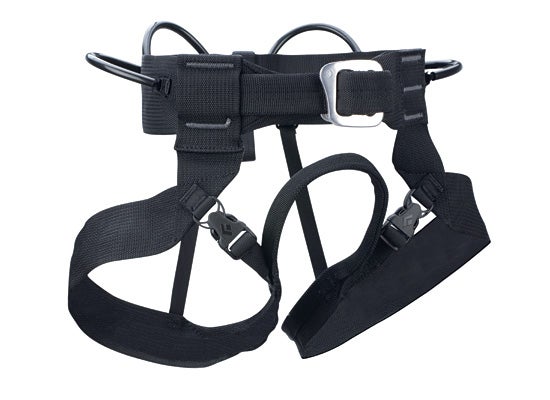
$35; bdel.com
This low-profile harness has quick-dry nylon webbing for wet rappels. Slip it off even when wearing ski boots. You can adjust the leg loops according to your layering and clip your ice screws, carabiners, prussiks, and rappel devices to the four gear loops. —Ryland Mauck-Duff, Contributor, Skiing Magazine
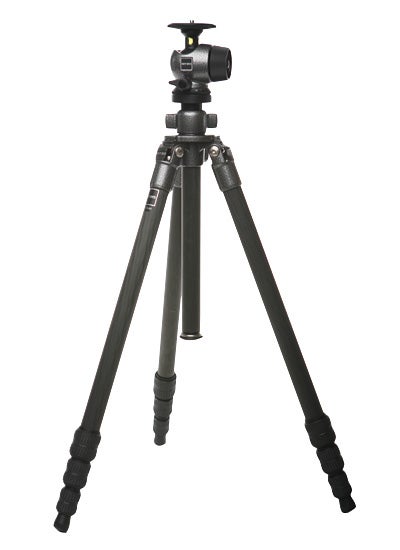
$775; gitzo.com
When your pack tips the airport scales at 45 pounds, the last thing you want to do is add a tripod—unless it’s this superlight carbon-fiber one with a magnesium ball head. It’s so stable, it’s as if it were built for ski photography, even though it’s not. —Niall Bouzon, Assistant Photo Editor, Skiing Magazine
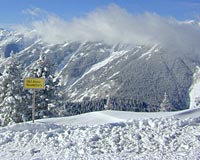
$600; patagonia.com
The Primo Down is as warm as a sleeping bag, is completely waterproof, and won’t make you look like the Michelin Man. Thanks to recycled materials, it may even help curb global warming. If it doesn’t, the bright orange quilting will look great 10 years from now on the beach…in Montana. —Niall Bouzon, Assistant Photo Editor, Skiing Magazine
Check out more gear picks from Skiing Magazine.
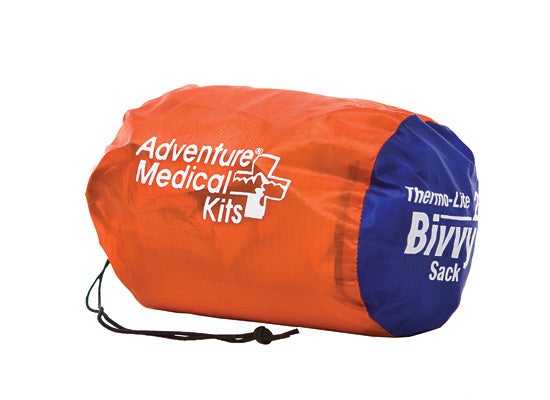
$34; adventuremedicalkits.com
Backcountry skiing is great until a storm blows in, temps drop, and you’re stuck overnight in a snow cave. Carry this 6.9-ounce bivy in your pack and it just may save your life. —Ryland Mauck-Duff, Contributor, Skiing Magazine
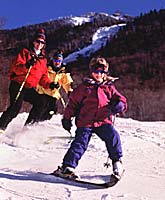
$60; bdel.com
Watching your partner drop into a crevasse is scary and pulling him out is even scarier. Beal’s Rando rope is light, weather-resistant, and long enough to pluck your buddy out. Or use it to rope up in glaciated terrain. —Ryland Mauck-Duff, Contributor, Skiing Magazine
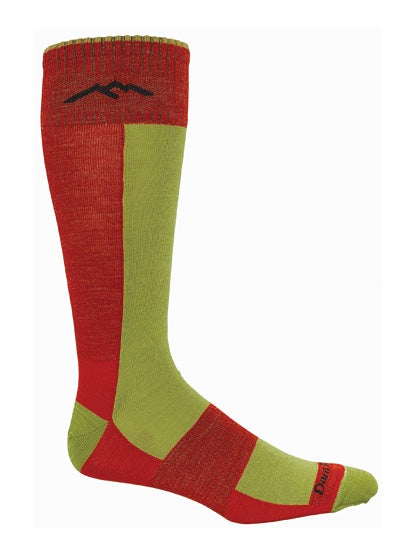
$20; darntough.com
In Vermont in February, it rains, drops to 30 below, and then pukes three inches. You have to be tough to be a skier there. Socks made in the Green Mountain state have to be hardy too. Vermont’s merino-wool Darn Toughs endure the cold, wick moisture, and are comfy in ski boots. —Ryland Mauck-Duff, Contributor, Skiing Magazine
Check out more gear picks from Skiing Magazine.

$910; head.com
I like my boots short on frills and long on performance. Which is why the Raptor 120, during its debut season in 2007–2008, became an instant favorite. A low-volume shell means your feet won’t slosh around and squander precious power. Big, microadjustable buckles are easy to clasp, and a pulleylike power strap snugs the upper cuff nicely. For power, sensitivity, and speed, these boots have few peers. —Sam Bass, Senior Editor, Skiing Magazine
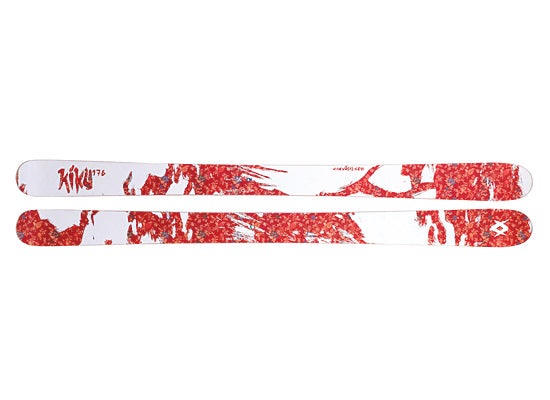
$825; volkl.com
There’s a reason why freeskier Ingrid Backstrom chose Völkl’s Gotama: the ski could handle her power and stomp the landings she needed it to. This year, Völkl smartened up and delivered ripper girls a big-mountain ski to call their own. The Kiku, at 105 millimeters underfoot and stiff as an ironing board, has similar dimensions to the Gotama’s but is built a touch softer. —Megan Michelson, Associate Editor, Skiing Magazine

$200; pieps.com
Pieps thinks a $400 beacon is a big enough impediment to make casual backcountry skiers roll the dice. So they brought us the Freeride, a single-antenna beacon with a digital readout that’s half the price of others. It works on flux lines, which takes a little more practice to learn, but when you have it, you’re golden. —Jake Bogoch, Editor, Skiing Magazine
Check out more gear picks from Skiing Magazine.
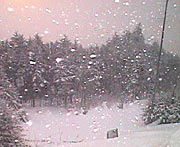
$915 (without binding)
A blood-and-guts big-mountain ski with a stiff flex, a big shovel, and a flat tail, the Sandstorm performs best in pow but it skis groomers like a fat race ski.
More Info
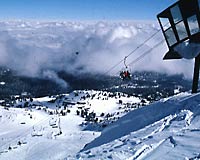
Most long underwear is bullshit. Your baselayer needs to do only two things well: pull moisture away from your skin so that your insulating layers can keep you warm, and not fall apart. Since LIFA is made of finely spun polypropylene (plastic), it is completely hydrophobic. It also lasts forever. Almost every other baselayer out there is made of polyester or wool. Those fibers hold moisture, and they eventually fall apart. That is all. -M.P. ($36; hellyhansengear.com)
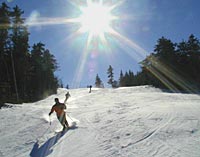
We love these bars because we can actually recognize the ingredients mid-chew. Nuts. Pretzels. Raisins. Sure, they’re processed and stuck together with goo, but they don’t resemble corkboard and they don’t freeze, either. -Rachel Odell ($15 for a box of 12; clifmojo.com)
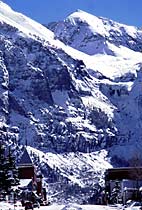
Down, that soft underplumage that keeps birds from freezing, is about three times warmer per ounce than synthetic fill. This Helios from Feathered Friends is for ski mountaineering. -R.O. (From $260, featheredfriends.com )
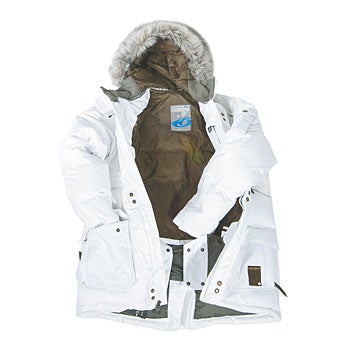
Down, that soft underplumage that keeps birds from freezing, is about three times warmer per ounce than synthetic fill. The Syndicate by Salomon is for daily resort wear. -R.O. ($320, salomonski.com)
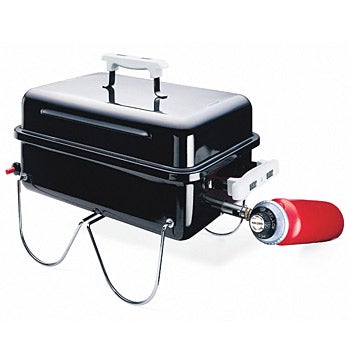
Cooking brats in a muddy parking lot IDs you as a skier, not a tourist. And it doesn’t get easier than with Weber’s classic rectangular gas grill. The laptop-size grilling surface fits eight parboiled brats with ease. We like to keep some veggie burgers on hand to throw to stray hippies. It’s all about giving back, bro. ($70; weber.com)
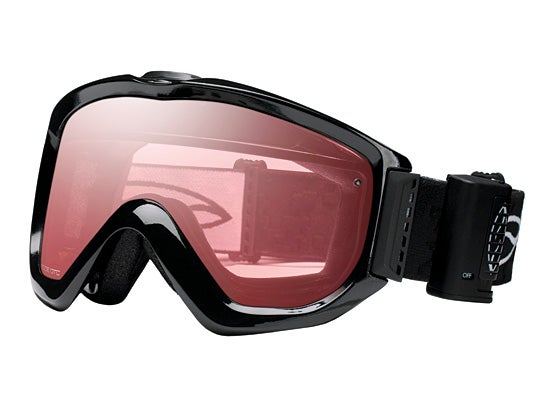
Frigid temperatures outside and warm, moist eyes inside are responsible for foggy goggles. Most models these days have a hydrophobic coating on the lens to absorb moisture from your eyes before it condenses and breathable foam around the frame to promote passive air circulation. The Phenom Turbo Fan has an extra feature: A tiny and quiet battery-powered fan mounted on the frame provides active ventilation when you need it.
$180; Buy it Now!
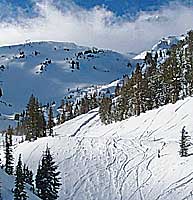
So you film Werner Herzog, worthy footage of your buddies skiing das Pow, only to crash on the way down and wreck your camcorder. Sony’s SR82, with its shockproof 60GB hard drive, never lets that happen. Files transfer easily to DVD or computer, and the 1.0-megapixel CCD and Carl Zeiss lens make for high-quality images. -P.V. ($750; sonystyle.com )
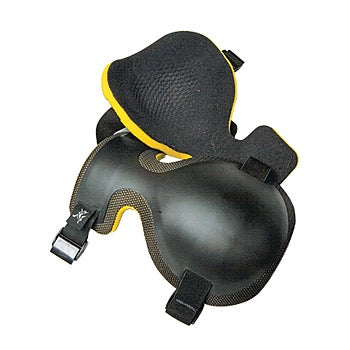
Banging your knee on a stump or submerged rock is a season ender, whether you’re a freeheeler or not. The Knee Caps fits snugly under your pants, don’t slip, and help wick moisture from that sweat pit behind your knees. – Megan Michelson, Associate Editor
$59; arcteryx.com
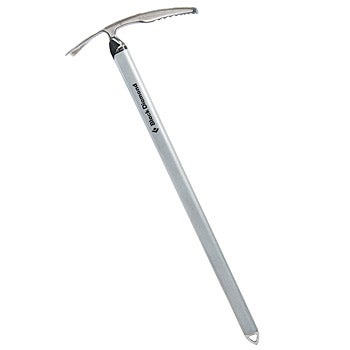
You’re ready to take down that line you’ve been eyeing all season. But the ascent is 1,000 vertical feet of frozen corn. If you take a digger, you’ll need something to arrest yourself on your slide toward death. This is it. Lightweight and durable and made for ski mountaineering, the Raven Pro ice ax offers comfort in no-fall situations. – Mark Lesh, Associate Art Director
$100; bdel.com
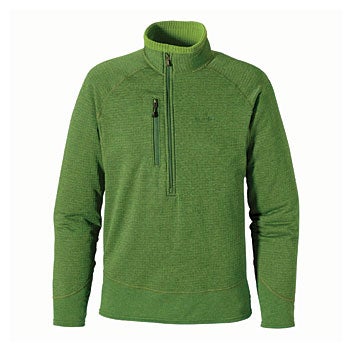
We’re fans of this stretchy, breathable midlayer because of its welded pocket, offset front zipper (read: no chin scratch), and astounding versatility. All that, and this year, it’s made from used soda bottles and secondhand clothes. – Megan Michelson, Associate Editor
$115; patagonia.com

Casio’s G’zOne is water-resistant, shock-absorbent, and GPS-enabled (but only when you get service). It shoots pictures and takes video. The only it doesn’t do is make using it on the lift acceptable. – Rachel Odell, Associate Editor
$150; casiogzone.com
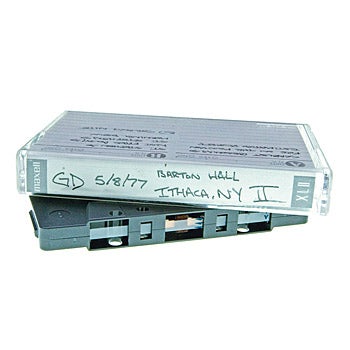
My older brother first dubbed the Dead’s Barton Hall tape for me when I was in eighth grade. (Thanks, bro.) Since then, it’s become a staple on winter-morning drives to the hill. This show from Cornell University is one of the most traded bootleg tapes for a reason. It’s classic ’77 Dead with tight performances of “Scarlet Begonias,” “Fire on the Mountain,” and “Morning Dew.” – Scott Gornall, Associate Editor
Stream it for free at archive.org.

If you’ve dropped cash for properly-fitting boots, socks with too much padding will undercut your investment. The impossibly thin Micro Fit socks, a blend of Lycra and polypropylene, don’t dull crucial snow sensitivity, but they wick moisture away from your feet, letting the boot liners keep you warm. – Sam Bass, Senior Editor
$15; bridgedale.com
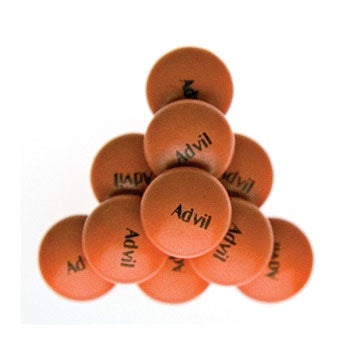
Holistic they aren’t. But when these little saccharin-sweet, sandstone-brown pellets of purity hit the market in 1984, they changed the sport of skiing forever. Just as effective on mogul-induced swollen discs as they are on reposado-induced cranial swelling, they can make you feel like you still have cartilage. – Marc Peruzzi, Editor-in-Chief
$4; advil.com
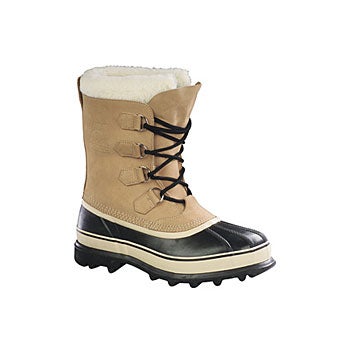
We’ve been shoveling our driveways for years in the same style and brand of waterproof pack boots. Nothing feels better after a day of cramming your toes into ski boots than slipping them into felt-lined Sorels. – Megan Michelson, Associate Editor
$100; sorel.com
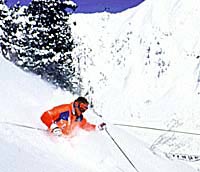
It’s a little windshield wiper for your goggles that you slide onto your thumb. If you think it’s stupid, you’re not from the East, and you don’t know that a little rain can turn boilerplate into silky corn – if only for a short while. Special thanks to the Sugarloaf Ski Shop for finding us one. – Marc Peruzzi, Editor-in-Chief
$2; ski shops throughout the East
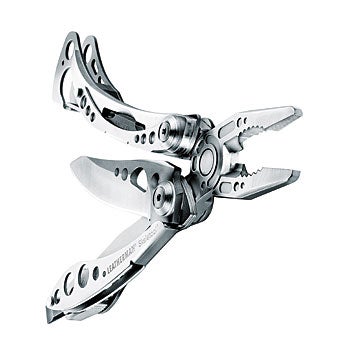
The original Leatherman tool was great, but the knife was worthless for anything tougher than salami, and the Phillips screwdriver bit stripped binding screws. Unclip the new Skeletool from your pack, open the knife with one hand (it’s tough enough to slice Cordura), and insert a Pozidriv bit to work on your bindings. Problem solved. -M.P. ($72; leatherman.com